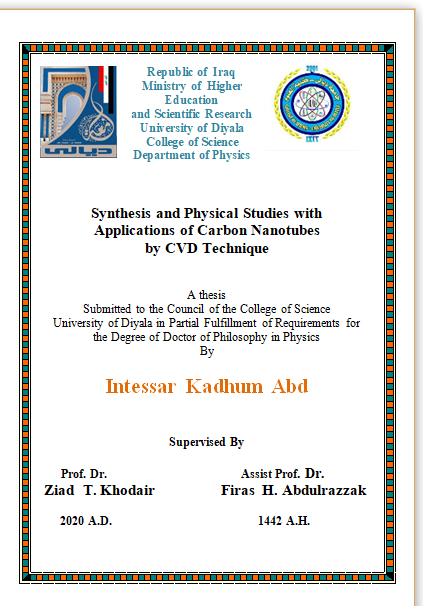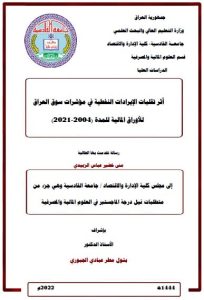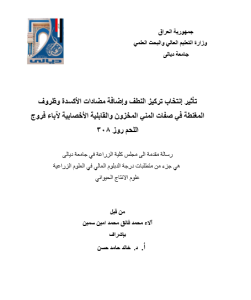abstract
In this study, for the first time in the laboratories of the Department of Physics – College of Science – University of Diyala, the manufacture of multi-walled carbon nanotubes (MWCNT) was made using the chemical vapor deposition system (CVD), which was prepared and manufactured most of its parts manually. As different ratios were mixed Of methanol and butanol as a primary source of carbon and the use of both viruses as a catalyst and hydrogen peroxide for purification.
used were techniques Raman spectroscopy, Field Emission Scanning Electron Microscopes (FE-SEM), Transmission electron microscopy (TEM) (TEM), energy dispersion spectroscopy (EDS), and x-ray diffraction (x-ray).
The Raman spectrum showed that the composition contains two main beams and for all samples: the G-band within the range of (1570-1585) cm-1, and the D-beam at the range (1300- 1340-) cm-1 which indicates the pattern of elongation (sp2), and (sp3) respectively.
Pictures of FE-SEM showed the formation of carbon tubes in various and various forms and for all samples, with a clear directional growth of the samples that were made from mixing alcohol ratios: (Methanol 75% + Butanol 25%, Methanol 50% + Butanol 50%), and the rate was obtained diameters are within (20-200) nm and lengths are within (1000-4200) µm.
As for images TEM, they demonstrated the formation of multi-walled carbon nanotubes with high clarity. EDS analyzes also showed the emergence of carbon, which is the main material for forming tubes and the appearance of both oxygen and iron.
The results of x-ray diffraction analyzes showed that all samples are polycrystalline and hexagonal type with a predominant direction (002).
After conducting the diagnostic process, the sample produced from (Methanol 50% + Butanol 50%) was used in the following applications due to growth in the straight direction of the carbon tubes as well as obtaining a good sample of (0.9 g) after the purification process as follows: –
First : the manufacture of an sensor for ethanol gas, and if the results show an increase in sensitivity when increasing the flow rate of the gas.
Second : the manufacture of a DSSC dye solar cell. The multi-walled nanotubes of both commercial and produced types were first loaded in 0.005, 0.01 ratios on titanium dioxide. This is precipitated as a paste on the base of the FTO glass by the method of the doctor blade, and then plasticized at 450° C for 30 minutes. The optical properties of these films were studied before and after the annealing process.
The highest efficiency of the DSSC4, which was 0.83%, was obtained.




